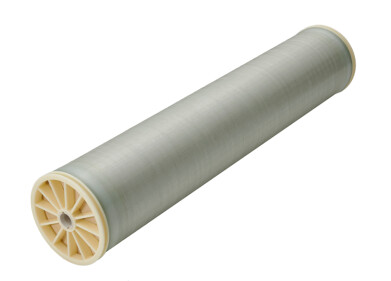Water/Wastewater
Miniaturisation of Rupture Disks Forces Industry Back to Drawing Board
May 18 2017
Miniaturised rupture disks from 1/8” to 1” deliver protection against overpressurisation at low, medium and high set burst pressures.
For more than 85 years, the rupture disk has served as an effective passive safety mechanism to protect against overpressure or potentially damaging vacuum conditions in oil and gas storage tanks and other enclosed vessels. However, as these pressure relief devices become increasingly miniaturised to sizes as small as 1/8” to meet the demands of a new generation of smaller, lighter applications, the industry is running squarely into design and raw material challenges that often require reengineering the product itself.
Fortunately, leading rupture disk manufacturers have embraced this challenge with novel structures and design elements that have led to a new category of miniaturised options from 1/8” to 1” at all ranges of pressure including low (15-1000 psi), medium (350-16,000 psi) and high (1,500-70,000 psi).
The beneficiaries are expected to be equipment manufacturers and design engineers currently developing the next generation of oil, gas, and petrochemical processing systems.
The Evolution of Rupture Disks
To understand the challenge requires an understanding of the origins of rupture disk technology.
When it comes to pressure relief devices, the two most common are safety valves (reclosing) and rupture disks, also known as bursting discs (non-reclosing). Rupture disks are designed to fail within milliseconds when a predetermined differential pressure, either positive or vacuum, is achieved. The device has a one-time-use membrane usually made out of various metals, but also exotic alloys and graphite.
In many applications the superior leak tightness and flow characteristics of a rupture disk are preferred over safety valves, which are known to leak. In fact, it is a common industry practice to install a rupture disk on the inlet side of a safety valve to economically protect against corrosion and provide the required leak tightness.
In another potential use unrelated to pressure relief, rupture disks can be designed to activate as one-time fast acting valves or triggering devices to initiate a sequence of actions with high reliability and speed.
Transition to Miniature
For decades, rupture disks have been used in petrochemical, chemical and oil field applications. In these applications, rupture disk sizes ranged from 1”- 6”, with larger sizes up to 60” for the largest piping configurations. To install the product, the rupture disc is placed in a holding device, called a safety head, and installed between flanged pipe ends.
However, as equipment manufacturers strive to make their products smaller and lighter, the rupture disk industry has been challenged to deliver miniaturized options well under 1” in diameter.
Due to a delicate balancing act between the shrinking diameters, a complicated choice between two rupture disk design philosophies, the limitations of the specific raw materials utilised for the membrane, and the variations required to meet the requirements for low, mid and high burst pressures have forced rupture disk manufacturers to the drawing board.
Competing Designs: Forward-Acting vs. Reverse Buckling
The first major decision when selecting any rupture disk of any size is the choice between forward-acting and reverse buckling technologies.
In the traditional forward-acting design, the loads are applied to the concave side of the disk. The thickness of the raw material employed and the diameter of the fitting in which it is mounted determine performance.
However, with this approach the rupture disk is prone to metal fatigue caused by aggressive cycling and operating conditions that can limit its operational life. Traditional rupture disk technology is additionally limited to applications having an operating to burst pressure ratio of 75% or less to avoid fatigue effects leading to potential unwanted activation.
Exacerbating the issue, forward-acting miniaturized disks with low set pressures require the use of tissue paper thin raw material that is fragile and prone to leakage when assembled.
This has caused a somewhat negative view of this type of disk even though it is still utilised in many static pressure applications and suffices for certain high pressure applications.
In a reverse buckling design, on the other hand, the dome is inverted toward the source of the load. Burst pressure is accurately controlled by a combination of material properties and the shape of the domed structure.
By loading the reverse buckling disk in compression it is able to resist operating pressures up to 100% of minimum burst pressure even under pressure cycling or pulsating conditions. The result is greater longevity, accuracy and reliability over time.
The Miniaturisation Challenge
However, miniaturisation of reverse buckling technology presents its own unique challenges, says Geof Brazier, Managing Director, BS&B Safety Systems, Custom Engineered Products Division.
BS&B Safety Systems invented the first rupture disk device in 1931. The company later pioneered reverse buckling technology and, more recently, the application of that approach to miniaturised disks as small as 1/8” at all ranges of pressure.
“As burst diameters decrease it becomes increasingly difficult to design a reverse buckling dome that will reliably collapse through such small orifice sizes,” says Brazier. “In many ways it can be like trying to fit a camel through the eye of a needle.”
To resolve this issue, BS&B has created novel structures that control the reversal of the rupture disk to always collapse in a predictable manner.
This includes, for example, a hybrid shape that combines reverse buckling and forward bulging characteristics that are pre-collapsed. In this type of design, a line of weakness is typically placed into the rupture disk structure to define a specific opening flow area when the reverse type disk activates.
Small nominal size rupture disks can also be very sensitive to the detailed characteristics of the orifice through which they burst, causing normal variations in holder support machined part dimensions to have an unwanted impact on burst pressure accuracy.
“With small size pressure relief devices, the influence of every feature of both the rupture disk and its holder is amplified,” explains Brazier.
For miniaturised products ¼” and up certified for high burst pressures up to 70,000 psi, BS&B manufactures the rupture disk and holder from a single piece of material, eliminating the usual connection between a rupture disk membrane and its support fitting. The rupture disk is intrinsically leak-tight by virtue of its unitary construction.
As for installation, Brazier says these miniature rupture disks are available as a single, integrated assembly certified to perform at the desired set pressure. The devices are typically threaded, but are also available in configurations for welding, soldering, or crimping based on the application conditions and leak tightness requirements.
Events
Carrefour des Gestions Locales de L'eau
Jan 22 2025 Rennes, France
Jan 29 2025 Tokyo, Japan
Feb 05 2025 Nantes, France
Feb 16 2025 Kampala, Uganda
Feb 26 2025 Chennai, India




-as-feedstock.jpg)





